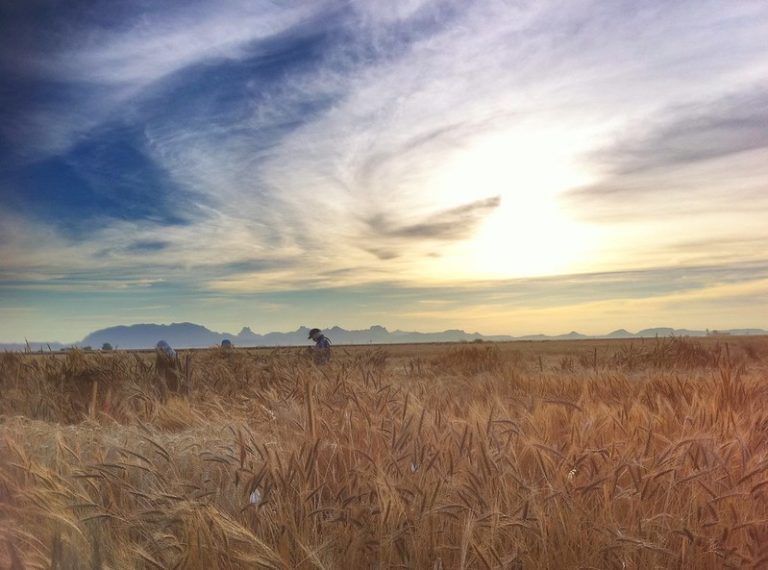
Perspectives from Mexico: the Best Habits to Protect the Environment?
27 April, 2020This story originally appeared in Periodic and is republished here as part of Covering Climate Now, a global journalistic collaboration to strengthen coverage of the climate story.”
Ninel Escobar Montecinos has spent the last 12 years dedicating herself to finding solutions to environmental problems. The Mexican climate change expert has a master’s degree in environmental economics and has been working for the World Wildlife Fund (WWF) for eight years, the world’s largest organization focused on natural conservation. As deputy director of Climate Change and Energy, she is in charge of all projects related to these areas.
WWF is currently working on different initiatives in Mexico, including a project to help companies buy renewable energy. Another initiative seeks for companies to set emission reduction goals. Yet another seeks to help communities in the marine coastal protected areas of Yucatan and Quintana Roo adapt to climate change.
We spoke with Ninel about the way in which our day-to-day decisions and our consumption patterns have an impact on the environment.
Most important: push for systemic change
Some of our day-to-day decisions can significantly reduce our ecological footprint. “But there are many other things that are defined by the system in which you live: the country, the state and the municipality in which you live. Because of this, you should not only seek change through small actions. Systemic change is also needed to really reverse the deterioration in nature,” explains Ninel.
On the one hand, a conscious citizen has to make better day-to-day decisions, but they must also push for systemic change to happen. By systemic change, Ninel refers to governments making decisions in favour of caring for the environment. In democratic societies, this collective change is achieved by voting for politicians who have the environmental agenda at the top of their priorities.
An example of the need for systemic change in Mexico, says Ninel, has to do with energy consumption. “In Mexico, less than 20% of the energy comes from renewable energy, the rest comes from fossil fuels. In this case, a systemic change is essential: we want more renewable energy in Mexico’s energy matrix.”
The concept of ecological footprint
According to Ninel, the concept of ecological footprint is a measure that was developed a few years ago to find out how much our eating habits, transport and general consumption are equivalent to in terms of land area. It is a concept that tells you how much land is required to meet your needs and to process all your waste. The ecological footprint concept is the broadest measure. Within this are others such as the carbon footprint or the water footprint.
This footprint calculator shows how many times over planet Earth would be needed if everyone in the world led your lifestyle.
Our mobility decisions
One of the most important footprints in Mexico City (CDMX) is that of transportation. And it not only has environmental implications, but for quality of life too. CDMX is one of the cities where people spend more of their lives on transport. That is why Ninel recommends that we try to live as close as possible to our work. Once this is done, you should opt for sustainable transport. “First there is the bicycle, then public transport, the shared car and, finally, the individual car. And when it comes to individual cars, you have to go for efficient cars that use little gas. ”
Dietary considerations
Ninel’s general recommendations highlight three points: keep in mind that beef produces the most greenhouse gases. You must be aware of the need to consume more local. And finally, it is necessary to take the trends and fashions in food with some reserve.
“Eating quinoa from Peru, goji berries, Himalayan salt and other products generate a lot of ecological footprint and trigger crises when there is a boom in demand. In Mexico, it happened with ginger, which became fashionable. So farmers in many parts of the country started growing ginger. Supply rose, but demand suddenly fell. And the farmers were left with a product that they could not sell at a fair price. In Peru, for example, the high demand for quinoa has generated scarcity and price instability”, explains Ninel.
In this case, there are options available to everyone: opt for food that is produced in our region. And Mexico, fortunately, has a very large diversity of foods.
Fast fashion
The fashion industry creates a brutal footprint on the environment, explains Ninel. Producing a white shirt consumes more than 2,000 litres of water, with 7,500 litres of water required to make jeans. “And being a garment that is worn about seven times, and discarded quickly, it’s not sustainable at all. The best thing is to buy very few clothes, have few clothes that are used for different things, and take care that they are of good quality, so that they last a long time”.
Microfibers must be avoided at all costs. “They are used a lot in textiles. These microfibers end up in the water of the rivers, and in the oceans. Through a WWF campaign, a study was carried out that showed that each week we eat five grams of plastic, the equivalent of a credit card. So it is important to look at the composition of the fabrics, and avoid micro-plastics,” said Ninel.
Follow Sounds and Colours: Facebook / Twitter / Instagram / Mixcloud / Soundcloud / Bandcamp
Subscribe to the Sounds and Colours Newsletter for regular updates, news and competitions bringing the best of Latin American culture direct to your Inbox.

